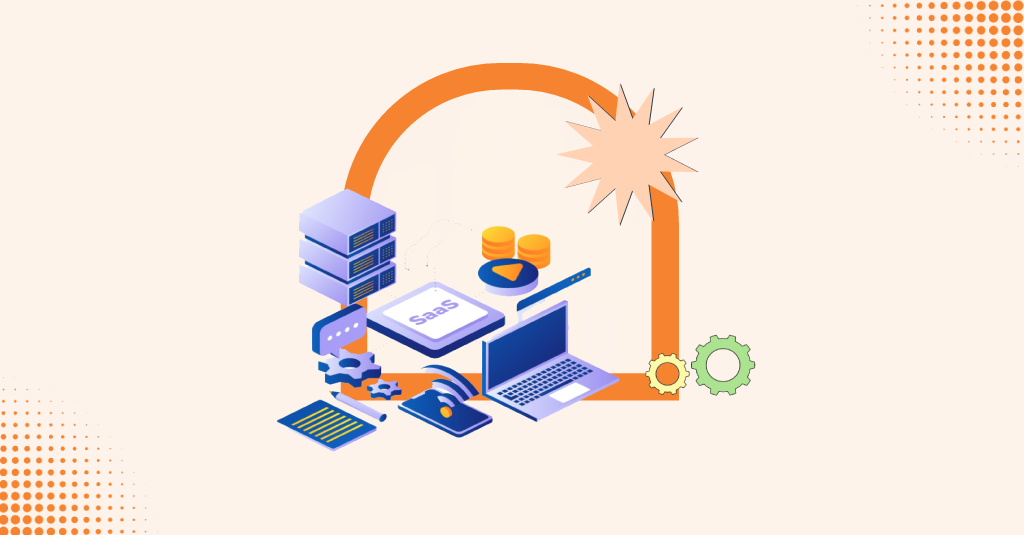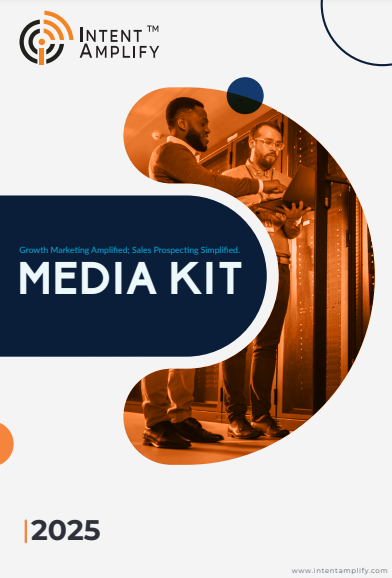
Top 10 Lead Generation Strategies for SaaS Companies in 2025
- Last updated on: June 9, 2025
SaaS lead generation strategies for 2025 are a lot different from the conventional ones.
They are about precision targeting, large-scale personalization, and smart automation. Extended sales cycles and complicated buyer journeys more than ever, SaaS marketers are doubling down on intent data, content funnels, and multi-channel ABM programs to engage high-fit accounts.
Today the effective strategies feature a smart combination of behavior signals and AI-powered tools. Making optimum use of firmographic data to identify, engage, and convert leads more quickly without blowing out the customer acquisition costs. In a market with fierce competition, the key to success is not necessarily volume, but quality and timing of leads.
According to Gartner, 83% of a typical B2B purchasing decision happens before a buyer ever talks to a salesperson.
That is, your lead generation strategy has to work overtime long before a demo is scheduled or a sales call is initiated.
Let us discuss the 10 most effective and future-proof SaaS lead generation strategies.
The strategies that SaaS marketers can use in 2025 to attract, nurture, and convert quality leads.
The top 10 SaaS Lead Generation Strategies
1. Transition from Volume to Precision with a Buyer-Centric Mindset
The SaaS buying process has irrevocably changed. Buyers now initially do extensive independent research prior to connecting to a sales representative.
This change requires SaaS marketers to do away with old volume-based strategies and embrace a precision-oriented mindset. That involves creating rich buyer personas, respecting buyer intent, and segmenting outreach accordingly.
Rather than producing thousands of generic leads, prioritize finding high-fit accounts and personalizing interaction at every step of the buyer journey.
The key here is mapping your content throughout the buyer’s journey and personalizing messages based on firmographic, technographic, and behavioral information.
2. Leverage Intent Data to Prioritize High-Intent Buyers
Intent data is the driving force behind predictive lead generation in 2025. It informs you when a prospective customer is actively browsing for a solution such as yours. There are three flavors of this data:
- First-party: Your website or app visitors (e.g., views, downloads, form submissions)
- Second-party: Provided by business partners (e.g., review sites)
- Third-party: Collected across the web from many sources (e.g., DemandBase, Bombora)
By overlaying intent data with firmographics, SaaS businesses can rank and prioritize leads more accurately. Marketing can then execute targeted campaigns and sales can target their time on in-market buyers.
3. Personalize at Scale with AI-Driven Campaigns
AI is now far from its experimental phase. In 2025, scaling personalization and optimizing operations is a must if you want to stay in the competitive market. From real-time lead-qualifying chatbots to AI-driven emails personalized for every ideal customer profile (ICP), the return on investment (ROI) is tangible.
AI technologies can dive into nuances of prospects’ requirements and can deliver dynamic content. It can also predict which accounts are ready to convert, and automate outreach. Software solutions enable hyper-personalized email campaigns, even at scale.
Utilizing AI for productivity, but always mixing in human intervention to maintain message quality and brand voice is the key here.
4. Lead with Content That Converts, Not Just Ranks
Content is still king in 2025. While it’s of a different type and a different nature, it’s not merely a matter of SEO rankings—SaaS buyers are looking for real insights, not generic whitepapers.
Successful SaaS content is:
- Business verticals-based ROI calculators.
- Detailed and relevant case studies with use cases.
- Webinars along with real-time Q&A by product specialists.
- Interactive tools and quizzes.
According to techstiks.com, 73% of B2B marketers say case studies are the most persuasive content type to engage buyers.
Make sure your content is connecting directly to pain points of the prospects and pushes them through the funnel.
5. Run High-Converting ABM Campaigns
Account-Based Marketing (ABM) is indispensable for SaaS companies that sell to mid-market and enterprise buyers. ABM aligns marketing and sales on a list of high-value accounts to serve personalized experiences.
ABM in 2025 entails:
- Identify firmographic + technographic-filtered accounts
- Personalized LinkedIn and email campaigns
- Microsites or demo vids tailored to decision-makers
Research Indicates that firms with aligned ABM strategies recorded 208% revenue growth compared to non-ABM strategies in the past five years. The actual magic occurs when seamless orchestration across teams, data, and platforms happens.
6. Take Advantage of Partnerships, Referrals, and SaaS Communities
In 2025, successful SaaS businesses don’t do it alone—they scale via ecosystems. Whether strategic partnerships, referrals, or engaged communities, these avenues are proving crucial to brand trust, accelerated deal velocity, and increased reach.
Community-driven growth is also growing. Participating in areas such as Product Hunt, Indie Hackers, or Reddit provides organic exposure and thought leadership.
Execution Ideas:
- Develop a formal referral program with rewards.
- Co-market with ecosystem partners (webinars, bundles, events).
- Sponsor or moderate Slack/Discord communities.
SaaS organizations that make investments in community building and strategic partnerships tend to experience increased retention, reduced sales cycle duration, and enhanced brand value—results that pure performance marketing can’t always deliver.
7. Make Paid Media Smarter with First-Party & Intent Data
Third-party cookies are a thing of the past. SaaS marketers need to move towards a more data-driven, targeted paid media approach based on first-party and intent data.
The future of paid media isn’t merely about spending, it’s about spending smarter by engaging the right accounts at the right moment, with relevance that produces conversion.
Here’s the strategic play:
- Centralize First-Party Data and then use it.
- Capture High-Intent Behavioral Signals
- Build Smarter, intent-aligned paid media campaigns.
- Customize creative by industry, stage, or persona through landing pages and dynamic content.
Sync up with sales to determine success on SQLs and pipeline contribution, not cost per click (CPC) or impressions. Maximize campaign insights to dial in audience quality and buyer journeys.
8. Align Sales and Marketing to Minimize Funnel Leakage
Misalignment between sales and marketing is still one of the largest quiet killers of SaaS pipeline health. In 2025, high-growth SaaS businesses are no longer “handing off” leads, they are constructing interdependent revenue teams with mutual accountability for results.
The steps to alignment are:
- Establishing qualified lead definitions (fit + intent + engagement).
- Developing shared dashboards in HubSpot or Salesforce.
- Checking lead quality on a weekly basis and adjusting campaigns accordingly.
Today’s buyers don’t go straight. Develop shared personas, align content and outreach to stages in the funnel, and align messaging on email, ads, outbound, and calls. This way, the buyer gets a unified story, not two distinct pitches.
9. Optimization for Conversions, Not Traffic
Your site is not a virtual brochure — it’s your highest-leverage conversion machine. Still, even in 2025, most SaaS businesses continue to pursue vanity metrics such as traffic spikes and design awards at the expense of the one metric that counts: pipeline contribution.
Traffic does not equal Growth.
Optimization best practices are:
- A/B testing demo pages and forms
- Exit-intent popups for lead magnets
- Minimized friction with streamlined CTAs
More traffic won’t matter if they don’t convert. What SaaS customers are looking for is clarity, value, and relevance, not snazzy hero copy or shiny product videos with nowhere to go. Design should support the buyer journey, not disrupt it.
10. Adopt Emerging Trends to Future-Proof Lead Generation
The speed of digital transformation has never been greater—and SaaS marketers who don’t keep up will be left behind. In 2025, the B2B buying process will be more nonlinear, AI-enabled, and omnichannel, requiring that marketers think differently about the kinds of outreach that work.
- Zero-click search: Prioritize featured snippets, AI-created answers, and structured data.
- Voice + AI search: Optimize for natural language queries used in tools such as ChatGPT, Siri, and Alexa.
- Video-first outreach: Personal video messages (through Vidyard or Loom) are more effective than cold emails, particularly on complicated deals.
To remain competitive in the next 3–5 years, innovative teams need to test early, learn fast, and scale successes. Future-proofing lead generation involves meeting buyers where they’re going, rather than where they’ve already been.
Conclusion: Winning at SaaS Lead Generation in 2025 and Beyond
If there is one defining characteristic of successful SaaS lead generation strategies in 2025, it’s strategic accuracy with adaptive action.
High-growth SaaS businesses today don’t merely pursue leads—they design integrated, data-driven, and buyer-focused experiences throughout the funnel. From the alignment of sales and marketing to the optimization of zero-click search, lead gen victory now requires a multi-faceted approach.
Here’s what distinguishes winning teams:
- Intent-Driven Targeting: Prioritize accounts demonstrating buying intent, not merely those who completed a form.
- First-Party + AI Alignment: Leverage your own data, augmented with predictive insights, to engage the right ICPs at the right moment.
- Content Designed for Conversion: Shift beyond traffic and create assets that actively move prospects through the funnel.
- Sales-Marketing Alignment: Coordinate teams, technology, and timelines to lower leakage and accelerate deal cycles.
- CRO-Centric Websites: Get every pixel and CTA answerable to the pipeline—not merely pageviews.
- Ecosystem Growth: Use partnerships, communities, and referrals to expand with credibility and context.
- Future-Proof Channels: Anticipate ahead of AI search, video-first outreach, and new buyer behaviors.
SaaS businesses that execute on these playbooks won’t only produce more leads—they’ll create predictable, scalable, and durable revenue engines for the long haul.
In an environment of noise, complexity, and AI-facilitated purchase, lead quality > lead quantity. And the route to quality is through alignment, agility, and audience understanding.
FAQs
1. What is the most effective SaaS lead generation strategy in 2025?
The most effective strategy is a combination of intent data targeting, content marketing, and ABM—especially when powered by AI.
2. How do I know if a lead is sales-ready?
You can use predictive lead scoring combining behavioral data (e.g., page visits, form fills) and firmographics to determine if the lead is sales-ready.
3. Is cold outreach still effective for SaaS?
Cold outreach would work only when personalized using intent signals. Generic cold emails are rarely effective in 2025.
4. How can Intent Amplify help SaaS companies?
We at Intent Amplify help SaaS brands layer intent data, ABM, and smart outreach to generate high-converting leads faster.
5. What’s the best content for SaaS lead generation?
The top content are ROI calculators, case studies, demo videos, and comparison guides.
Let’s connect, optimize your strategy, and drive real results, because in today’s market, speed, personalization, and precision aren’t nice to have, they’re necessary.




